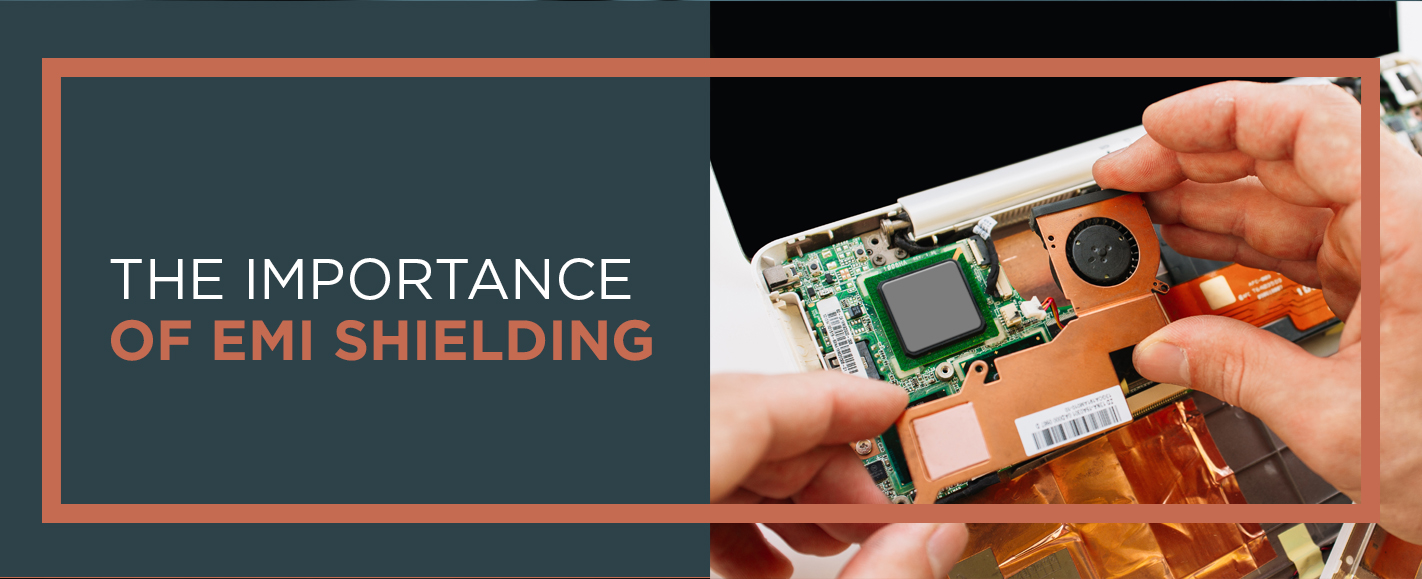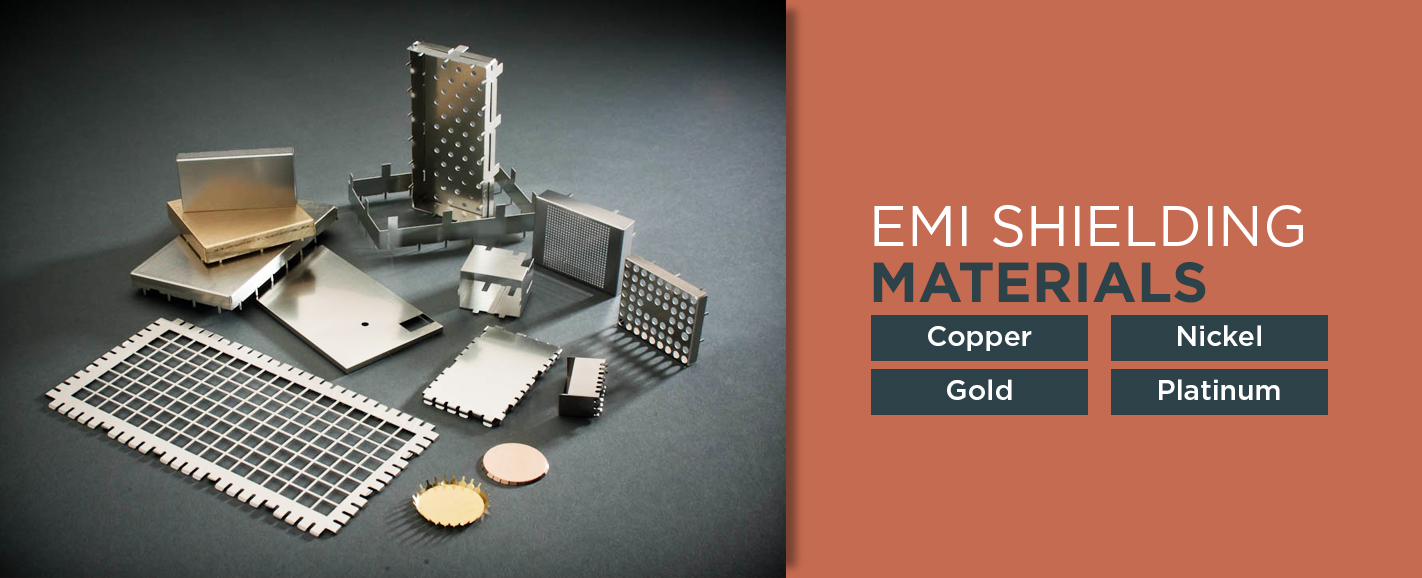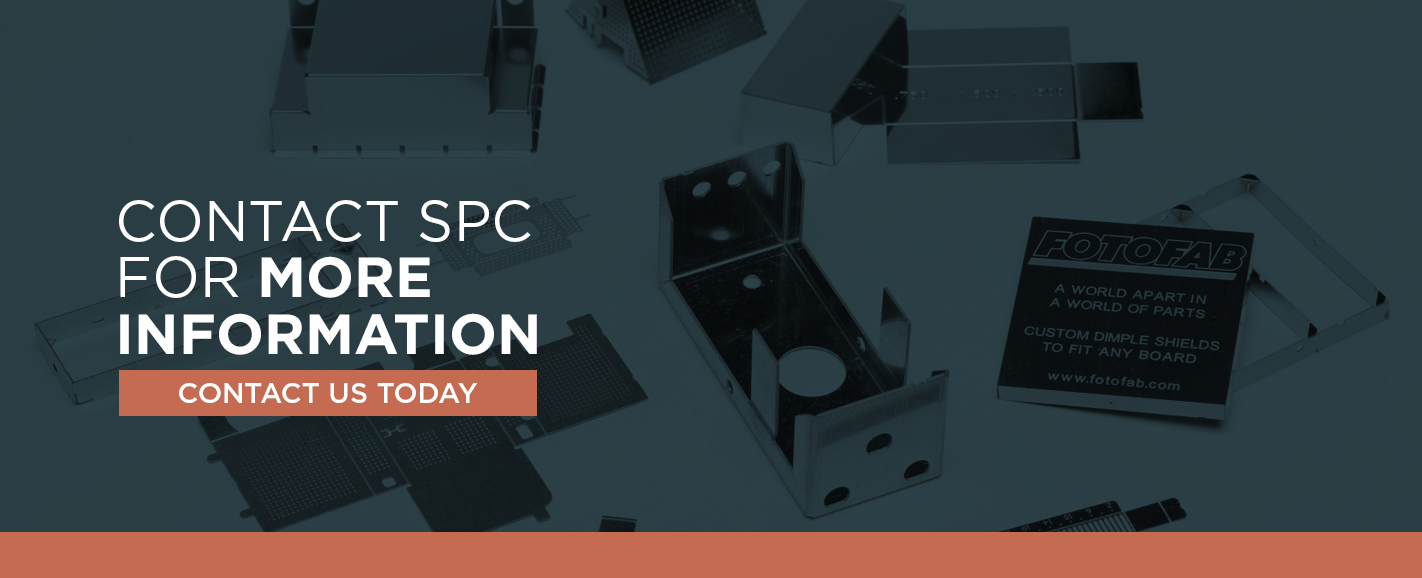Hospitals and medical facilities are home to hundreds of medical devices. According to the World Health Organization (WHO), there are more than 10,000 types of medical devices available. From specialized beds to CT scan machines, medical devices are used to improve patient health. In some cases, a medical device such as a defibrillator saves a patient’s life.
What many patients may not realize is the engineering that goes behind the tools they see doctors and nurses use. For example, many medical devices must include shielding from electromagnetic interference (EMI). Medical device manufacturers and engineers consider EMI shielding when designing medical tools. EMI shielding prevents medical equipment failure and keeps manufacturers compliant with federal regulations.
Although the demand for more compact, lighter plastic equipment is on the rise, non-conductive plastic needs metal shielding to ensure protection from EMI. Non-conductive plastics do not prevent the emission of electromagnetic waves which can cause nearby equipment to malfunction. Likewise, plastics do not protect a device from the impact of electromagnetic or radio frequency interferences.
Fortunately, a metal coating protects against EMI without adding too much weight to medical equipment. Metal coatings also strengthen a piece of digital equipment, prolonging its lifespan. This article addresses the importance of EMI shielding, what materials are used to accomplish EMI protection and how the shielding process works.
What Is EMI?
EMI is when electromagnetic emissions from a device or natural source interfere with another device or system. EMI might occur if the following three factors are present — the source of EMI, a coupling path and a receptor. The coupling path from the source to the receptor can be either an electric current, magnetic field or an electromagnetic field. The EMI source can be a natural source, such as lightning. It can also come from devices such as radios, computers, wireless networks, cell phones or any electric device designed to transmit signals. Some devices not made for transmissions, such as electric motors and power lines, can also sometimes cause EMI.
How Does EMI Shielding Work?
To understand how EMI shielding works, imagine a radio. Inside a radio, electrons travel through the wires to create an electrical current. As the current flows the wires, it generates an electromagnetic field around the wires. The electromagnetic field spreads out from the antenna and creates radio waves – a type of electromagnetic radiation. Once the radio waves hit another radio or receiver, it produces a current inside the other receiver’s wire. This information is then processed and transmitted as music or unwanted noise. When someone wants to listen to a radio, electromagnetic radiation is a good thing. However, when a radio signal interferes with medical equipment, the results can be catastrophic. This is where EMI shielding comes into play.
Get the latest industry information and stay up to date with plating and metal finishing solutions.
Sign Up for our Newsletter
Conductive materials, like copper, shield devices from EMI by blocking electromagnetic emissions and then reflecting and absorbing them. Ultimately, this prevents EMI. An EMI shield can be made from a metal enclosure or a metal coating.
The Importance of EMI Shielding
The consequences of EMI range from minor annoyances to severe injuries or even death. As more people acquire cell phones, the need for EMI shielding increases. According to WHO, nearly 7 billion people use cell phones worldwide. Although mobile phones are low-powered transmitters and operate at frequencies between 450 and 2700 megahertz (MHz), cell phones may interfere with implantable cardioverter defibrillators (ICDs) and pacemakers. The American Heart Association recommends that individuals keep their cell phones and walkie-talkies at least 6 inches away from their ICD or pacemaker to protect themselves from EMI. An interference could lead to an arrhythmia.
Cell phones are not the only issue regarding EMI. Radios are perhaps a bigger concern and reason for adequate EMI shielding. There have been instances where radio frequency interference from police walkie-talkies have caused powered wheelchairs to drive themselves. As a specific example, in 1987, a monitoring system failed due to EMI, and two patients died as a result. Other dangerous scenarios could result from EMI, such as causing life support equipment to fail. In other words, patients and individuals who rely on medical devices also depend on EMI shielding to make sure the devices function properly at all times.
EMI shielding is becoming more challenging because more people are using new medical devices in both homes and medical facilities. According to the Institute of Electrical and Electronics Engineers (IEEE), new devices tend to be more susceptible to EMI because they use low-power circuitry which can be more sensitive to electromagnetic fields. Medical devices are also becoming smaller and faster and are being constructed with digital circuits. This is a challenge for device engineers because the faster the digital speed, the greater the required bandwidth, making it more difficult to control both electromagnetic emissions and vulnerability. At the same time, engineers must meet the demand for circuit boards with the least EMI possible and with the fastest processing speeds. However, using a conductive metal as a shield does not affect speed, and it blocks radio waves and other forms of EMI.
EMI Shielding Materials
A common technique for shielding electronic devices within a plastic covering is to apply a conductive metal coating. The following metals may be used as protective shields against EMI:
- Copper: Copper is widely used with electronic medical devices due to its high conductivity and because it’s tough against corrosion. Because copper is naturally soft and malleable, it is ideal for electroplating with other materials and highly effective when used when electrical components. When greater strength and performance is needed, designers can apply a thicker copper coating.
- Gold: Gold is highly resistant to corrosion and features high conductivity. Gold is an excellent coating to be used in any climate and also functions as an effective shield against EMI. Gold also will not cause a reaction when it comes into contact with the human body, making it a superior coating for pacemakers.
- Nickel: Nickel is another common conductive metal used in EMI shielding. Nickel can be alloyed with other metals such as tin or tungsten for outstanding resistance to the elements and increased conductivity. Nickel is also resistant to corrosion.
- Platinum: Platinum is often used in pacemakers and prostheses because it resists corrosion. Platinum is extremely durable and one of the least reactive metals, and it can withstand wear and tear of water and acid. It is very malleable for application to complex, intricate parts. Platinum can also be alloyed with other metals.
- Silver: Silver is the most conductive metal that exists. However, it is less resistant to corrosion than other metals, so it may not be used as much in medical device applications. With that said, silver can be alloyed with other metals to provide a cost-effective solution. Overall, silver is highly versatile.
The Electroplating Process
The first step to choosing the right metal for EMI shielding, whether for an enclosure or coating, is to consider the following:
- If the design is for protection against EMI or to suppress electromagnetic emission
- Whether you need protection against electric fields, magnetic fields or both
- Shielding standards and compliance
- The frequency range
- The required attenuation
- The environment the enclosure or coating will be placed in and how much corrosion resistance is needed
- The size of the device in need of shielding
- Any holes or gaps in the shield
- Cost
- Metal conductivity
- The difficulty of the coating process
Electroless Plating
Typically, the beginning of coating plastic with a conductive metal is electroless plating. This process involves a deposited layer of copper or nickel onto plastic parts. Electroless plating occurs without the use of electrical power but instead undergoes autocatalysis. Autocatalysis is when the product of a single chemical reaction is itself the catalyst for that reaction.
During electroless plating, a part is first thoroughly cleaned to remove any dirt or oil from the surface. Then, it is dipped into an aqueous solution. Part of this process involves an acid etching to roughen a plastic surface and prepare it for a metal coating. Once the initial metal coating is deposited, the part is ready for a thicker metal coating. More coating may be added during an electroplating process to achieve optimal EMI protection.
The result of electroless plating is a smooth, continuous metal coating with high resistance to corrosion. Electroless plating is usually a less complex process than electroplating. If you need a uniform metal coating on intricate parts, electroless plating is the way to go.
Electroplating
Electroplating is a process which deposits metal onto a plastic surface using an electric current to cause a reaction. Electroplating is commonly used to build the thickness of a metal surface, increase wear resistance and improve conductivity. Metals such as copper, tin, gold, silver and palladium, as well as alloys, may be applied during electroplating. Generally, there are two different methods of electroplating – barrel plating and rack plating.
Barrel plating may be the best technique for coating a high volume of smaller parts at once. This process involves placing the parts in a barrel-shaped cage that is then submerged into a tank containing a metal solution, chemicals and center bars. A slow tumbling action promotes electrical contact within the barrel, causing the metal coating to stick to the surface of the immersed parts. Barrel electroplating is an efficient process because it can coat parts simultaneously using the same equipment, and it provides a uniform finish.
Engineers might prefer rack electroplating when they need a complex, precise coating to meet strict standards. During the rack plating process, parts are attached to metal racks with screws, wires or spring fingers. This keeps parts in place as they are immersed in the plating solution. Rack electroplating is the better method for delicate parts that cannot withstand the tumbling action that occurs during barrel plating. Overall, it coats complex parts more efficiently. It is the preferred choice for medical electronics and can be used to coat parts with copper, nickel, gold, silver and other metals needed for EMI protection. The only downside is rack plating is more labor intensive than barrel plating.
Requirements
When designing an enclosure or coating for a medical device, you need to know the standards that apply to that product. The Center for Devices and Radiological Health (CDRH) enforces standards for thousands of different medical devices. Their goal is to ensure public health and safety by examining the EMI shielding of a medical device and providing solutions where needed. According to the U.S. Food and Drug Administration (FDA), a medical device should be compatible within its electromagnetic environment, meaning it does not emit electromagnetic levels that could cause EMI in other devices in the facility. Nor should a medical device be vulnerable to EMI.
ASTM International standards help guide medical device engineers toward meeting electromagnetic compatibility (EMC) compliance. For example, the standard specification for copper coatings states that the coating on significant product surfaces should be smooth and free of visual defects. The thickness of the copper coating must meet certain measurements according to the electrodeposited copper class. For example, class 25 copper coating must meet a minimum thickness of 25 micrometers (µm).
For palladium coatings, ASTM International recommends a palladium thickness of 0.75 to 1.5 µm for low-energy electrical connector contacts and a thickness of 0.25 to 0.5 for catalysts. They also state that the coating should be examined using 10x magnification during the testing stage.
Because EMI shielding is critical for medical devices to function properly, engineers and manufacturers must adhere to strict regulations and pay careful attention to all design details, especially regarding EMI shielding and metal coating. Someone’s life might depend on a single medical device design.
Sharretts Plating Company: The Best Choice for Your Medical Device Shielding Needs
When it comes to medical devices, safety, sanitation and quality must be a priority. Many individuals rely on medical technology to keep them alive and functioning. Medical equipment should not fail due to EMI.
By using conductive metal coatings, engineers can ensure their products meet government standards and effectively shield EMI. However, choosing the best metal for EMI can be a challenge. At SPC, we can help.
If you need EMI shielding for medical devices, we have the electroplating tools and over 80 years of experience to meet your needs. We will ensure your medical devices are clean, free of defects and will not interrupt the functioning of other devices due to EMI. At SPC, we adhere to quality certifications such as ISO: 13485 and ISO:9001 to make sure products are biocompatible, decreasing the risk of infection or rejection if the device is an implant. By using our electroplating services, medical devices will be:
- Cleaner
- Protected against wear and corrosion
- Conductive
- More durable
Our customers know they can rely on us to efficiently and effectively coat medical devices using gold, silver, copper, tin, nickel or other metal finishes. Our team of consultants can help you choose the right metal and the best plating technique to achieve the desired results.
Contact SPC for More Information
Designing medical devices with EMI shielding is a challenge, especially in a world filled with computers, cell phones and other objects that could cause unwanted transmissions. No one wants to see medical equipment fail. To ensure your medical products resist the impact of EMI, contact us today.








